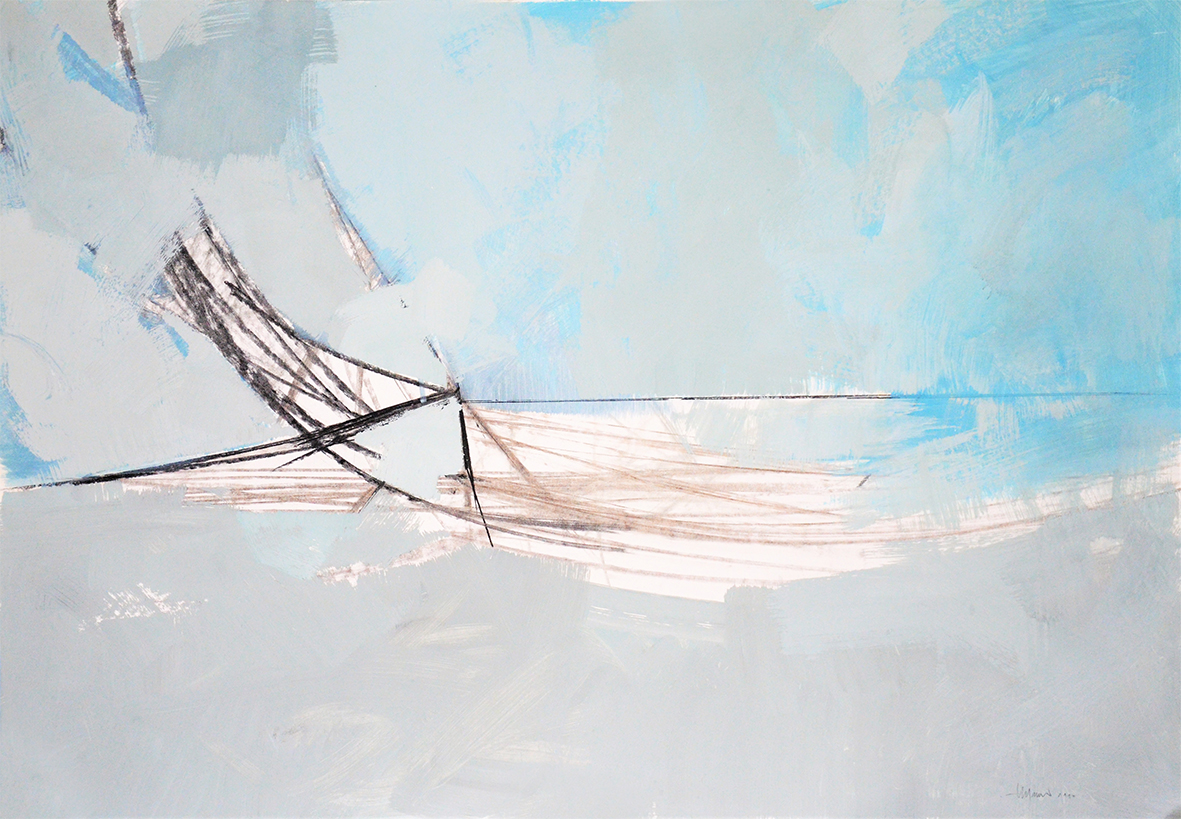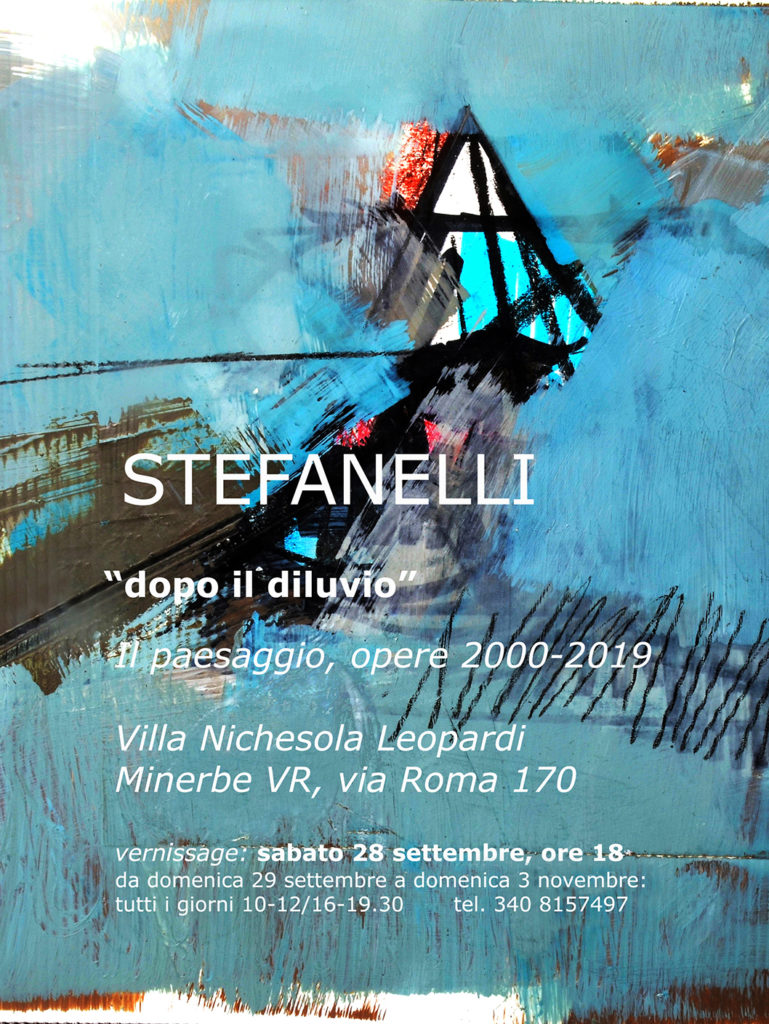“[…] intorno a sé, in cerchio, il filo delle ore, l’ordine degli anni e dei mondi.”
A la Recherche du temps perdu.
Il litorale
Il paesaggio della Maremma e quello della Puglia costiera hanno lasciato una traccia profonda nella mia pittura, legati entrambi a una stagione della mia vita assai ricca di stimoli e di eventi determinanti, in un mondo ribollente e incautamente ottimista, ignaro della propria cecità di fronte ai terribili problemi all’orizzonte.
All’epoca, negli anni ’60, la sistematica devastazione del territorio già mostra i primi segnali: strutture sfacciatamente invasive sorgono in silenzio a violentare l’ambiente e lo stupore sgomento di chi guarda, quel disagio mai conosciuto prima e tossico per la mente è destinato a diventare presto cibo quotidiano, una droga che raggiunge il cervello con una micidiale azione analgesica progressiva che assuefà rapidamente a quello scempio.
Il litorale è l’anello più debole di questa catena infame. Il primo a soccombere: una mutazione irreversibile che disperde rapidamente un patrimonio arrivato a noi intatto e interamente sciupato nel volgere di un paio di generazioni.
La bruttezza arriva dalla terraferma e dilaga ormai come una macchia di petrolio a lambire la costa, incrostando profili una volta purissimi di volumi assurdi e sfacciati, di materia artificiale e greve, di scorie ignobili che invadono quel sottile, fragile confine tra due universi insozzando in modo irreparabile il magico passaggio tra terra e mare e proponendosi all’occhio distratto di chi ormai guarda senza più riuscire a vedere. Il massacro è ormai irreversibile e la bruttezza trionfante. Tutto questo rappresenta la negazione assoluta dell’intelligenza e dello spirito umani: una catastrofe senza precedenti, silenziosa e definitiva.
La pittura nasce dalla visione e quest’ultima è ormai azzoppata, deteriorata e putrescente come i sacchi di pattume che costellano ogni angolo di strada su cui l’occhio si va a posare. Oppure è relegata in un limbo opaco e colloso dal quale è sempre più arduo uscire, un ricettacolo artificiale falsamente rassicurante, fresco e senza vita, accogliente come l’arido corridoio di un supermercato.
Un microcosmo artificiale che anestetizza ogni sensibilità e trascina la mente in un mondo freddo e preconfezionato, nitido e ordinato, dove il bisogno di bellezza sfuma nel falso trionfo di un’apparenza volgare, artificiale, servita fredda come un gelato.
Ho amato molto i litorali di Toscana e di Puglia, questi ultimi soprattutto: le aggettanti torri moresche mirabilmente fuse con gli speroni rocciosi che si susseguono alternandosi a spiagge bianche e gentili, tracce delicate di un’umanità ancora incapace di nuocere al proprio ambiente in modo irreparabile ma già in grado di creare nuove visioni del mondo, nuove testimonianze di cauta, dolce violenza sul paesaggio. Ho amato molto i segni del tempo che arricchiscono quelle visioni, le usure, le irresistibili ferite che gli anni, i secoli lasciano su quelle superfici, su quei volumi che lentamente si riducono, si consumano fino a lasciare un’anima scarna che conserva però tutte le suggestioni, tutti i suoni di una realtà ormai trapassata.
Ma il tempo non fa più parte del paesaggio. L’uomo nel sonno che Proust ha osservato non tiene più “[…] en cercle autour de lui le fil des heures, l’ordre des années et des mondes.”
Il mondo nel quale ci troviamo oggi a vivere ha rinunciato al Tempo per correre e affannarsi in un eterno, angoscioso presente.
E quell’ultimo fil, quel sottile, fragile, ultimo filo si è spezzato per sempre insieme alla Bellezza.
“[…] in a circle around him the thread of the hours, the order of years and of the worlds.”
A la Recherche du temps perdu.
The seashore
The Maremma landscape and the Apulia coast have deeply marked my painting, both of them relating to a season of my life that was very rich of inspirations and key events, in a world that was in ferment and rashly optimist, unaware of its blindness about the terrific problems at the horizon.
At that time, in the Sixties, the systematic devastation of territories was already showing the first signals: shamelessly intrusive buildings rose silently to violate the environment and the observer’s confused astonishment, a distress that had never been acknowledged before and that is indeed toxic for the mind, was destined to become quickly the daily food, a drug that reaches the brain with a growing fatal analgesic action that inures to that mess.
The seashore was the weakest ring of this infamous chain. The first to perish: an irreversible mutation that rapidly consumed a natural heritage, which had reached us intact and was then entirely spoiled in a couple of generations.
The ugliness came from the mainland and spread like wild fire to surround the coast, crusting lines that were once pure with absurd and embarrassing volumes, made out of artificial and heavy matter, with ignoble scums that occupied that fragile, subtle board between two universes, dirtying irreparably the magic passage between land and sea and presenting to eyes that at this point look without seeing anymore. By then, the massacre was irreversible and the ugliness had triumphed. All this represents the total abnegation of the human intellect and spirit: an unprecedented catastrophe, silent and definitive.
Painting generates from the vision, which is now crippled, ruined and decaying, like the rubbish that we see here and there at every corner. Or it is banished in a faded and sticky limbo, which is harder and harder to escape, an artificial haven that is falsely reassuring, cool and yet with no life, as cozy as an aisle in a supermarket. An artificial microcosm that anesthetizes every sensitivity and drags the mind in a cold and pre-packed world, tidy and clean, where the need for beauty fades away in the fake triumph of a gross appearance, artificial and served cold like an ice-cream.
I have much loved seashores in Tuscany and in Apulia, the latter even more than the former: the Moresque towers sticking out and admirably merged with the rocky spurs that alternates with gentle white beaches, as delicate traces of a humankind that was yet unable to irreparably damage their environment but already capable to create new visions of the world, new evidence of cautious, soft violence on the landscape.
I have much loved the signs of the time that enrich those visions, the wears, the irresistible injuries left by years, centuries, on those surfaces, on those volumes that slowly size down, pine away to remain only a skinny soul, which still preserves all the grandeur, all the sounds of a bygone world.
However, time is not part of the landscape anymore. The sleeping man that Proust observed does not hold anymore “[…] en cercle autour de lui le fil des heures, l’ordre des années et des mondes.”
The world we live today has given away time, to run and rush in an eternal, anguished present.
And that very last fil, that thin, delicate, last thread has broken down forever, together with Beauty.


Leave A Comment